Inksticks (墨), one of China's Four Treasures of the Study of classical literary along with brushes, inkstones and papers, is a great carrier of Chinese traditional culture. As a type of solid ink, Chinese inksticks is the primitive coloring material for calligraphy and brush painting. Grind the inksticks against an inkstone with a small amount of water, and then the liquid ink comes. Calligraphers and artists always increase or reduce the intensity and time of ink grinding to change the thickness of the ink according to their own needs.
The earliest artifacts of Chinese inks can be traced back to 12th century BC. Huizhou Inksticks (徽墨) has long been accepted as the highest grade among all kinds of inksticks since Tang Dynasty (618 ~ 907). In fact, the ingredients of inksticks is always a mystery inherited by a few remaining manufactories of the ink stick production. The manufacturing of inksticks is also a craft but you can carefully appreciate it in Hu Kaiwen Ink Factory.
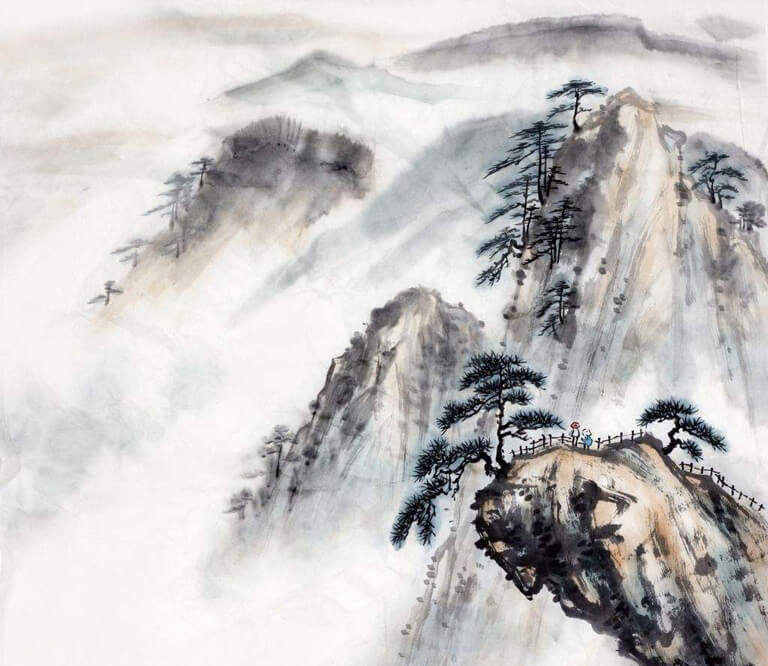
Chinese Ink Painting of Yellow Mountain
In late Tang Dynasty, Xi Chao (奚超) and his son Xi Yangui(奚廷珪) who once made inksticks for living migrated from Henan to Shezhou (歙州) to seek refuge from the war. When they came to Shezhou and saw the clustered pine trees (important raw materials for making inksticks), they decided to return to their former career. They added several Chinese herbal medicine and raw lacquer into the pine soot, and then the finished inksticks become antiseptic, mothproof and balmiest. When the emperor of Southern Tang Dynasty Li Yu (李煜) get the inksticks made by Xi Chao and Xi Yangui, he cherished the inksticks as treasures and ennobled Xi Yangui as Ink Officer. Xi's Family was given a family name of “Li” and people call the inksticks “Li Ink (李墨)”. Hereafter, Li Ink became famous. In Song Dynasty (960 ~ 1279), emperor Song Huizhong renamed Shezhou as Huizhou, and Li Ink became well-known as Huizhou Ink.
Since then, a mass of skillful craftsman in Huizhou began their inksticks career. During the reign of Emperor Qianlong of Qing dynasty, Hu Tianzhu (胡天柱) learnt making inksticks in one factory as an apprentice. Because of his intelligence and uprightness, he was high valued by his boss and took over the factory finally. He renamed himself Hu Kaiwen (胡开文) which literally means developing literature. Under his operation and management, Hu Kaiwen Inksticks Factory became the best and most popular one. As time goes by, it remains the traditional working process of manufacturing inksticks which has attracted a large number of artists, writers, travelers, etc. Till now, there are two factories well-preserved – one is in Huangshan City (Tunxi) and the other is in Shexian County (歙县). The one in Huangshan City is more popular because of its good location and convenient access.
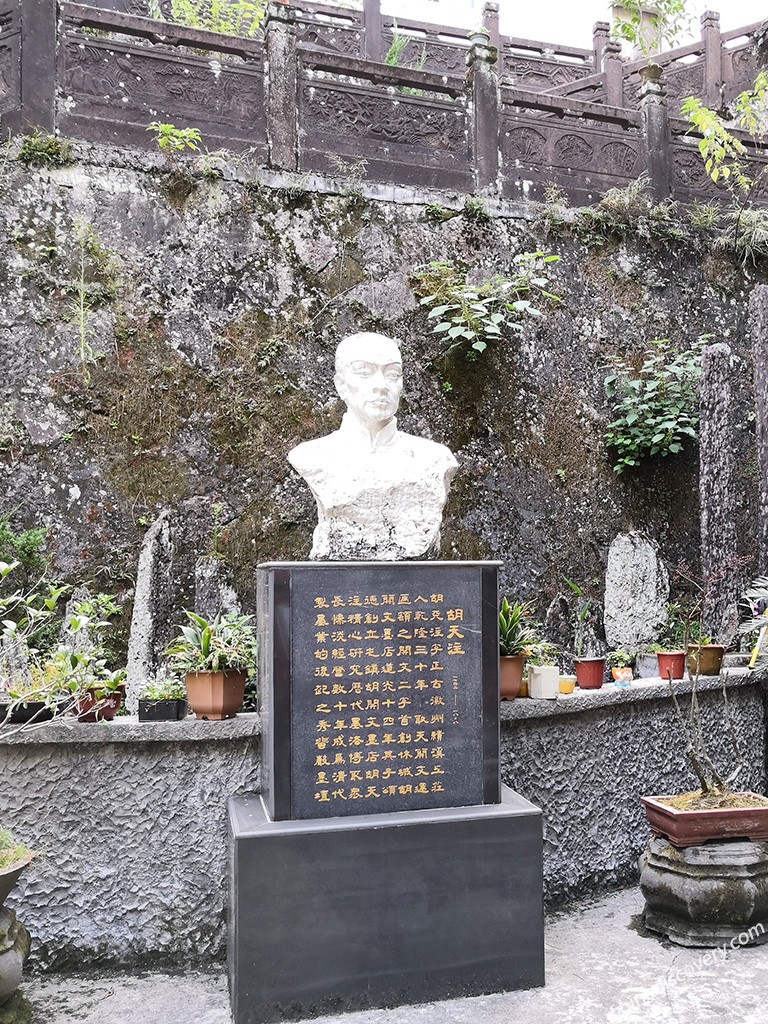
Statue of Hu Kaiwen
There are 4 main buildings in Hu Kaiwen Factory. Passing the entrance, the building on your left side is the ink store for exhibiting and selling the ink products. The building on your right side is a four-storeyed building which is equipped with administrative office and inksticks workshops. Don't enter the front gate of the building directly. You need to go ahead and climb along the old stone steps to the third floor of the building. The workshops are located on the third and fourth floors. Near the door to the third floor, you can see a first-storied building with two workshops – one for mixing inks materials and one for making inkstone. There is also another two-storyed white-painted building with always closed front gate, but from the side door you will find some workshops for collecting soot.
While you are walking on the small lane to Hu Kaiwen Ink Factory, you will gradually smell the ink's fragrance. Visiting Hu Kaiwen Ink Factory, you will get enough to see and to do. The most highlighted part must be seeing the workers making inksticks. More than that, you can even experience making inksticks personally and admire the delicateness of the finished inksticks and Inkstones.
The whole process of making inksticks roughly includes soot collecting, mixing & shaping, drying, and painting & decoration. You can clearly see almost all the producing process except from collecting soot.
Refining Soot – Refining soot is extracting soot from the pine branches or oil reserves by incomplete combustion. It is the most important step for making inksticks. The duration and degree of heating determine the quality of soot while the quality of soot determines the quality of the inksticks. This step can only be see in a few days of one month.
Making Gule – Hu Kaiwen Ink Factory always use bone glue. Put the raw bone glue into the pot and pour water with an temperature of 30 ~ 40 ℃. Stirring them with a piece of bamboo and bring in the steam when the gule is bonded to each other.
Mixing & Shaping Inksticks – There is a big cool workshop where you can see workers mixing and shaping inksticks. The temperature has be controlled in constant temperature to keep the ink in best condition, so it might be a little cold for visitors. You can see a worker mixing the soot and the ingredients together, and then putting it in the mould to shape it into a cuboid.
Drying – The inksticks cannot be put in the sunlight directly, or it will lose its good quality. Instead, it needs drying in the wind naturally. In general, the drying period lasts for at least 6 months.
Painting & Decoration – When the inksticks is dried, the workers will gild it with beautiful decorations, like flowers, birds and other auspicious patterns.
Moreover, you can also witness the process of making inkstones. An inkstone is a stone mortar for the grinding and the containment of ink. It might be made from stone, clay, iron, porcelain and bronze. There is one inkstones workshop where you can see two workers engraving the stones. You must be marveled at how a stone become an inkstone with delicate patterns after the workers' elaborate carving.
Get amazed by the mysterious skill of making inksticks and want to join in the workers? Of course you can. Hu Kaiwen Ink Factory provides visitors an opportunity to experience one part of inkstick-making process. Under the instruction of a qualified teacher, you will learn how to mix the materials together, pound them with a pestle, and press them into the mould. When you finish your inksticks, you can print your handprint on the inksticks and take them home. It will be a memorable souvenir for your trip to this Chinese old factory or a treasured gift for your family and friends.
The fee for experience making inksticks is 150RMB/2 Inksticks (available to be shared by two people). Making one inkstick takes about 1 hour usually.
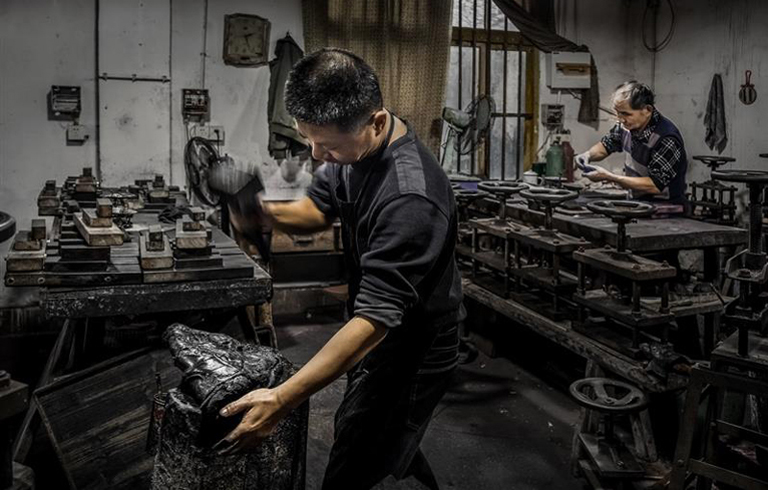
Workers are Mixing the Inksticks

Paint the Inksticks with Beautiful Partterns
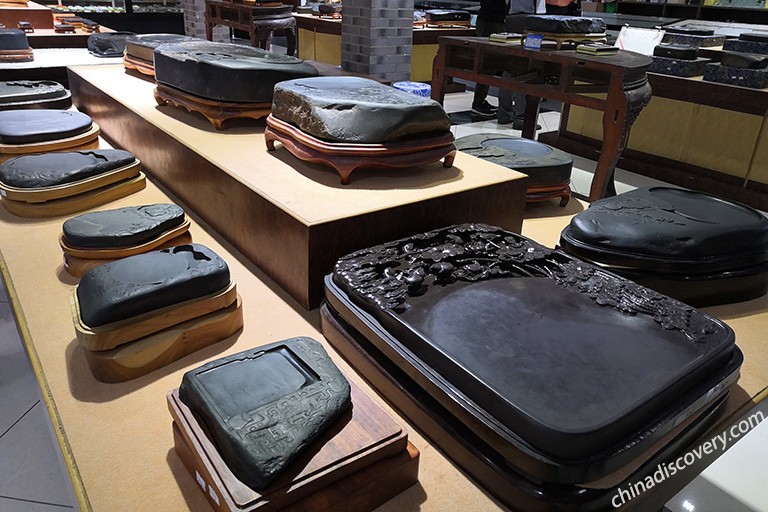
Inkstones Exhibited in the Factory
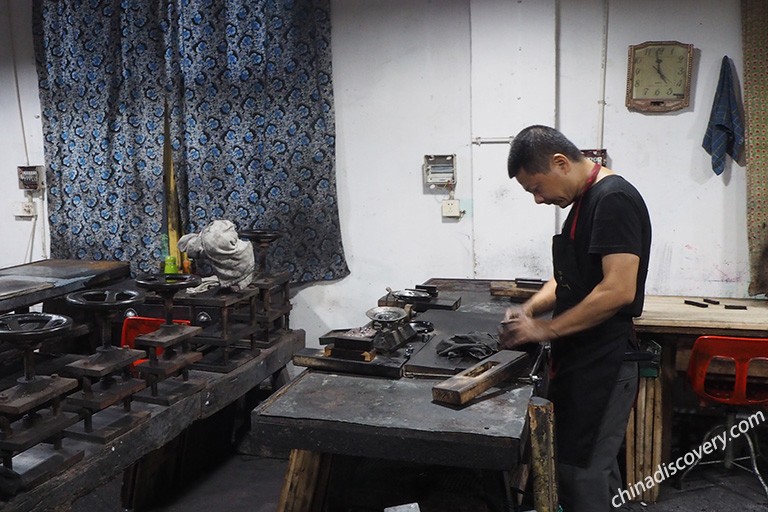
Experience Making Inksticks
Hu Kaiwen Ink Factory (Tunxi) is located in the downtown area of Huangshan City, only about 600 meters (within 10 minutes' walk) away from Tunxi Old Street. It can be easily visited from your hotels in city center of Huangshan City by walk.
Huangshan is a popular destination which can be reached by flight, high speed train and long-distance bus from several cities. Top recommended gateway cities to start a Huangshan tour are Shanghai, Huangshan and Beijing. Shanghai and Beijing operate both flights and high speed trains to Huangshan. High speed trains from Shanghai also stop in Hangzhou. Read more>
If you want to get rid of hustle of public transportation and troublesome navigation, you can take a private tour package which covers sightseeing, dining and transfer from us. Our local tour guide and driver will escort you to Tunxi Ancient Street with speed and convenience, and take care of all the details. You just need to focus on sightseeing.
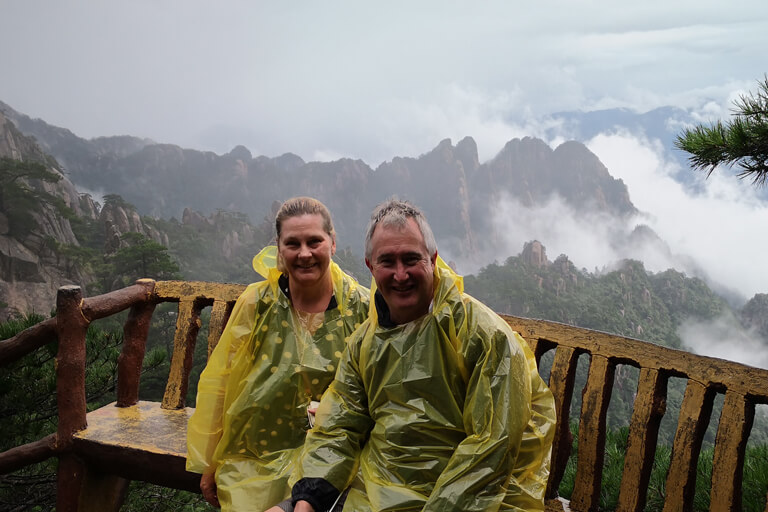
Smith Family from New Zea Land Traveled Huangshan with China Discovery
Tunxi Old Street (屯溪老街) is an authentic old street with perfectly-preserved Huizhou-style buildings. Originally built in 900 years ago, it offers a thick fragrance of antique to all visitors. Tunxi Old Street is 1.5 kilometers long and 7 meter wide. Strolling along Tunxi Old Street, you can appreciate the traditional Huizhou houses with high white-painted walls, gray tiled and red lanterns. There are also many stores selling local specialties, like snacks, scripts, paintings, tea and some other souvenirs. Almost all the goods sold in the stores are the products of Huizhou culture. If are keen on Huizhou food, don't miss Laojie Di Yi Lou (老街第一楼) which is praised as Huangshan's top restaurant by travelers. Read more>
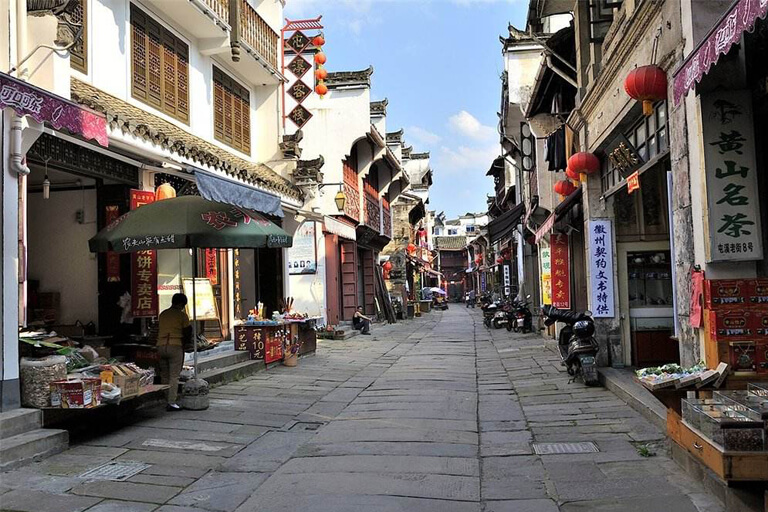
Antique Tunxi Old Street
3 days is enough for a Yellow Mountain essence tour. With a good location in the city center, Hu Kaiwen Ink Factory is only about 10km to Huangshan Tunxi Airport. If you reach Huangshan City by flight and leave by high speed train, you are suggested to spend half a day visiting Hu Kaiwen Ink Factory and Tunxi Old Street firstly on the arrival day. When your Yellow Mountain Journey ends, you can drive to the train station directly. If you leave by flight, it is also available to visit Hu Kaiwen Ink Factory on the departure day.
If your time permits, it is recommended to extend your Yellow Mountain to Yixian County (黟县) and Shexian County (歙县) to explore more Huizhou culture by visiting the painting-like ancient villages and historical sites.
Related Tours:
>> 3 Days Yellow Mountain Essential Tour
>> 4 Days Best Huangshan Tour with Hongcun & Xidi Ancient Villages
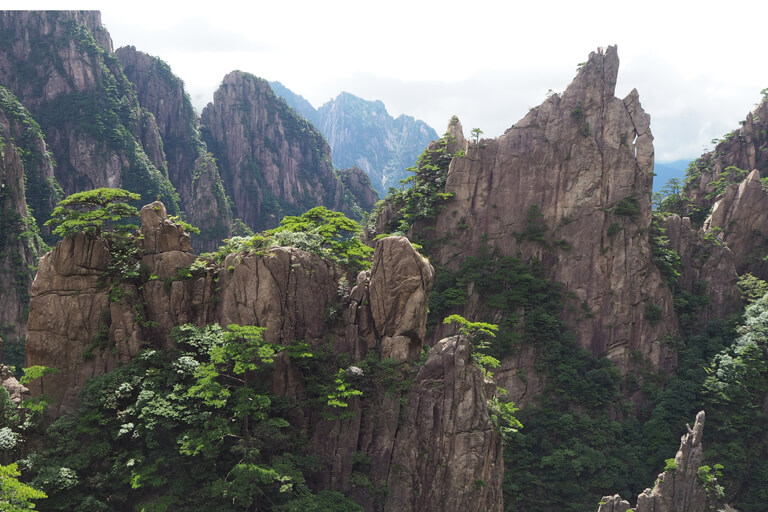
Amazing Peaks in Yellow Mountain
1. All the staff needs to focus on their work, so please keep your voice a little lower and don't disturb them.
2. It is permitted to take photos of the working staffs in the workshops, but you need to avoid using flashlight which may cause an uncomfortable.
3. In the stores of Hu Kaiwen Ink Factory, you can appreciate many exquisite finished inksticks, inkstones and brush pens. Remember that taking photos there is forbidden
Top 3 Huangshan tours chosen by most customers to explore Huangshan in the best way. Check the detailed itinerary, or tailor your own trip now with us.
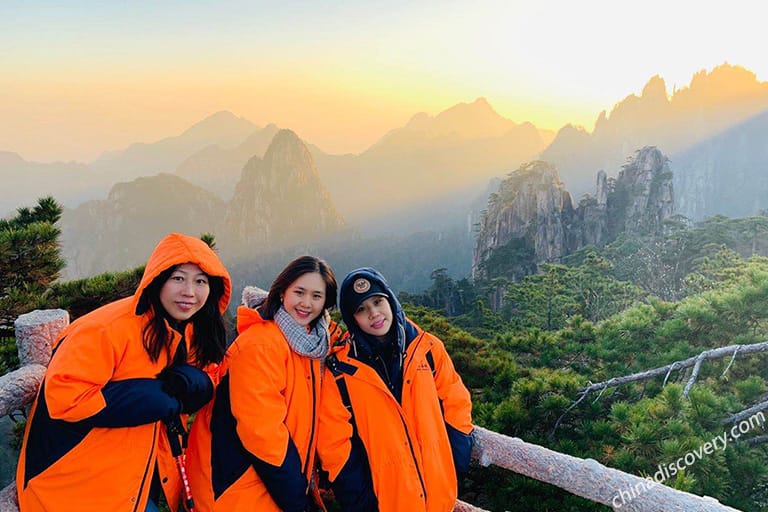
Tunxi - Huangshan - Tunxi
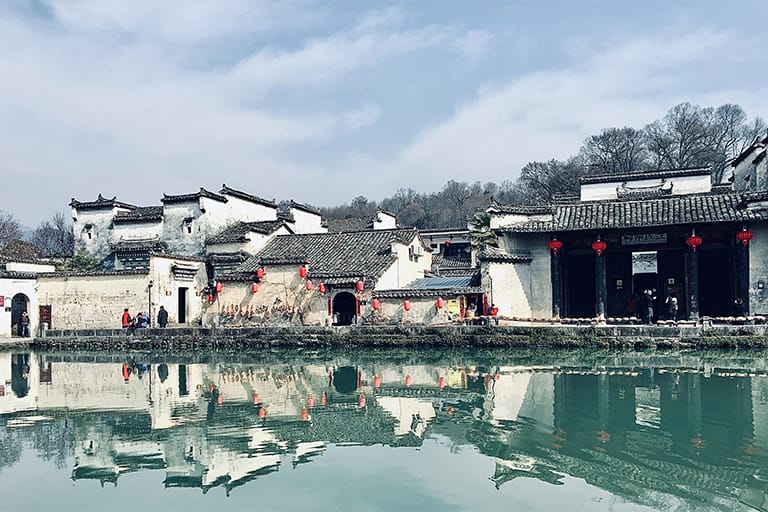
Tunxi - Huangshan Mountain - Hongcun - Xidi
Start planning your tailor-made holiday to China by contacting one of our specialists. Once inquired, you’ll get a response within 0.5~23.5 hours.
Customize a Trip